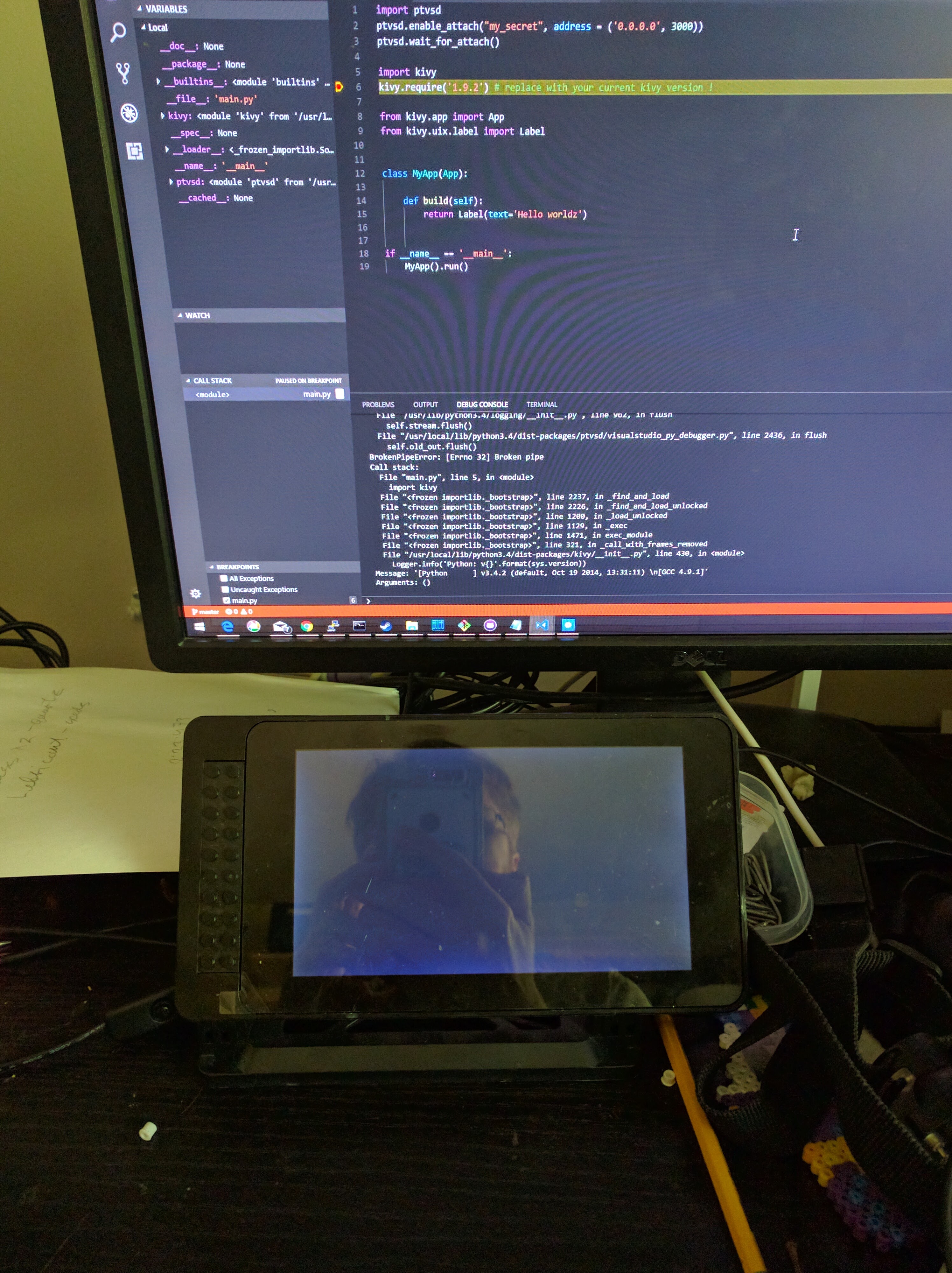Hey there, tech enthusiasts! If you're diving into the world of IoT (Internet of Things) using a Raspberry Pi, having a reliable SSH remote access setup is like having a superpower. Picture this: you're chilling at your favorite coffee shop, sipping on your latte, and BAM—you can control your home automation system from miles away. That's the magic of SSH (Secure Shell) on your Raspberry Pi. In this article, we'll explore the best SSH remote access methods for Raspberry Pi IoT projects, so you can stay connected and manage your devices like a pro.
But wait, why should you care about SSH in the first place? Well, SSH is more than just a way to remotely access your Raspberry Pi. It's a secure communication protocol that encrypts your data, ensuring no sneaky hackers can intercept your commands. Whether you're running a weather station, a smart home hub, or even a retro gaming console, SSH is your go-to tool for hassle-free remote management.
Before we dive deep into the nitty-gritty of SSH, let's get one thing straight: this isn't just another tech guide. We'll break down everything you need to know in a way that's easy to digest, with actionable tips and tricks to make your IoT projects rock. So, grab your Raspberry Pi, a cup of coffee, and let's get started!
- Jerome Jesse Berry Halle Berrys Father His Life Amp Struggles
- Explore The Isley Brothers Vinyl Greatest Hits More Music
What is SSH and Why It Matters for Raspberry Pi IoT
SSH stands for Secure Shell, and it's basically the Swiss Army knife of remote access tools. Think of it as a secure tunnel that lets you communicate with your Raspberry Pi from anywhere in the world. For IoT projects, this is a game-changer because it allows you to manage your devices without being physically present.
Here's why SSH matters:
- Security: SSH encrypts all your data, making it nearly impossible for hackers to intercept your commands.
- Convenience: Access your Raspberry Pi from anywhere, whether you're at home, work, or on vacation.
- Flexibility: SSH supports various commands, file transfers, and even graphical interfaces if you need them.
For Raspberry Pi enthusiasts, SSH is like having a personal assistant for your IoT projects. You can update software, check system logs, and troubleshoot issues without lifting a finger near your device.
How to Set Up SSH on Your Raspberry Pi
Setting up SSH on your Raspberry Pi is surprisingly easy, and we'll walk you through it step by step. First, make sure your Raspberry Pi is running the latest version of Raspberry Pi OS. If you're not sure, head over to the official Raspberry Pi website and grab the latest image.
Enable SSH on Raspberry Pi
To enable SSH, you have two options:
- Using the Raspberry Pi Configuration Tool: Open the terminal and type
sudo raspi-config. Navigate to "Interfacing Options," select "SSH," and enable it. - Adding an SSH File: If you're setting up a headless Raspberry Pi (no monitor or keyboard), simply create an empty file named "ssh" (without any extension) in the boot partition of your SD card.
That's it! SSH is now enabled on your Raspberry Pi. Easy, right?
Best SSH Clients for Remote Access
Now that SSH is up and running on your Raspberry Pi, it's time to choose the right client for remote access. Here are some of the best SSH clients you can use:
1. PuTTY (Windows)
PuTTY is a classic SSH client that's perfect for Windows users. It's lightweight, easy to use, and supports all the essential SSH features. Download it from the official website and connect to your Raspberry Pi by entering its IP address.
2. Terminal (macOS)
Mac users are in luck because SSH is already built into the Terminal app. Simply open Terminal and type ssh pi@your-raspberry-pi-ip. Replace "your-raspberry-pi-ip" with the actual IP address of your Raspberry Pi.
3. Mobaxterm (Windows)
If you're looking for a more advanced SSH client, Mobaxterm is the way to go. It supports SSH, SFTP, and even X11 forwarding, making it a versatile tool for Raspberry Pi projects.
Securing Your SSH Connection
Security is key when it comes to SSH, especially if you're accessing your Raspberry Pi over the internet. Here are some tips to keep your SSH connection safe:
- Use Strong Passwords: Avoid using "raspberry" as your default password. Create a strong, unique password for your Raspberry Pi.
- Disable Password Authentication: Switch to SSH key authentication for added security. Generate a key pair using
ssh-keygenand copy the public key to your Raspberry Pi. - Change the Default SSH Port: The default SSH port is 22, but changing it to a non-standard port can deter automated attacks.
By following these security tips, you'll ensure that your Raspberry Pi remains safe from prying eyes.
SSH Tunneling for IoT Projects
SSH tunneling is a powerful feature that allows you to securely access services running on your Raspberry Pi, even if they're not exposed to the internet. For example, you can use SSH tunneling to access a web server or a database running on your Raspberry Pi from anywhere in the world.
Here's how to set up an SSH tunnel:
- Open your terminal or SSH client.
- Type
ssh -L 8080:localhost:80 pi@your-raspberry-pi-ip. - Now, open your browser and navigate to
http://localhost:8080to access your Raspberry Pi's web server.
SSH tunneling is a must-have for IoT projects that require secure access to internal services.
Managing Multiple Raspberry Pi Devices with SSH
If you're managing multiple Raspberry Pi devices, SSH can still be your best friend. Instead of logging into each device individually, you can use tools like Ansible or Fabric to automate tasks across all your devices.
Ansible for Raspberry Pi Management
Ansible is an automation tool that allows you to manage multiple devices with ease. You can write playbooks to automate tasks like software updates, file transfers, and configuration changes.
Here's how to get started with Ansible:
- Install Ansible on your workstation.
- Create an inventory file listing all your Raspberry Pi devices.
- Write a playbook to define the tasks you want to perform.
- Run the playbook using
ansible-playbook your-playbook.yml.
With Ansible, managing a fleet of Raspberry Pi devices becomes a breeze.
Troubleshooting Common SSH Issues
Even the best tools can sometimes give you trouble. Here are some common SSH issues and how to fix them:
1. Connection Refused
If you're getting a "Connection refused" error, check the following:
- Make sure SSH is enabled on your Raspberry Pi.
- Verify that the IP address and port number are correct.
- Check your firewall settings to ensure SSH traffic is allowed.
2. Permission Denied
If you're getting a "Permission denied" error, try these solutions:
- Double-check your username and password.
- Ensure that SSH key authentication is properly configured.
- Check the file permissions on your Raspberry Pi.
By troubleshooting these common issues, you'll save yourself a lot of headaches.
SSH Best Practices for Raspberry Pi IoT
To make the most out of SSH for your Raspberry Pi IoT projects, here are some best practices to follow:
- Regularly Update Your Raspberry Pi: Keep your OS and software up to date to protect against vulnerabilities.
- Monitor SSH Logs: Check your SSH logs regularly for any suspicious activity.
- Use a Static IP Address: Assign a static IP address to your Raspberry Pi for consistent access.
By following these best practices, you'll ensure that your SSH setup is both secure and reliable.
Real-World IoT Projects Using SSH
Now that you know how to set up and secure SSH on your Raspberry Pi, let's look at some real-world IoT projects where SSH plays a crucial role:
1. Home Automation System
With SSH, you can remotely control your smart home devices, check sensor data, and update software without being physically present.
2. Weather Station
SSH allows you to access your weather station's data and perform maintenance tasks from anywhere in the world.
3. Security Camera System
Using SSH, you can securely access your security camera footage and configure settings without compromising your privacy.
These projects demonstrate the versatility and power of SSH in IoT applications.
Conclusion: Take Your IoT Projects to the Next Level
Well, there you have it—everything you need to know about the best SSH remote access methods for Raspberry Pi IoT projects. From setting up SSH to securing your connection and troubleshooting common issues, we've covered it all. Remember, SSH is more than just a tool—it's a gateway to endless possibilities in the world of IoT.
So, what are you waiting for? Dive into your next Raspberry Pi project and let SSH be your trusty sidekick. And don't forget to share your experiences in the comments below. We'd love to hear about your IoT adventures!
Table of Contents
- What is SSH and Why It Matters for Raspberry Pi IoT
- How to Set Up SSH on Your Raspberry Pi
- Best SSH Clients for Remote Access
- Securing Your SSH Connection
- SSH Tunneling for IoT Projects
- Managing Multiple Raspberry Pi Devices with SSH
- Troubleshooting Common SSH Issues
- SSH Best Practices for Raspberry Pi IoT
- Real-World IoT Projects Using SSH
- Conclusion: Take Your IoT Projects to the Next Level



Detail Author:
- Name : Dr. Laisha Hirthe IV
- Username : andreanne54
- Email : sibyl.cassin@johnson.net
- Birthdate : 1973-08-12
- Address : 4425 Pouros Fords Suite 478 Binsbury, ID 03169
- Phone : +14807623785
- Company : Schimmel Group
- Job : Surveying Technician
- Bio : Eius porro numquam voluptatem aut quibusdam veniam blanditiis. Sunt dolores ipsam qui ea aut quos. Nam id quidem ea rem iste aut molestias.
Socials
facebook:
- url : https://facebook.com/julio7713
- username : julio7713
- bio : Quo ut atque ratione et ratione corrupti. Ab nam perferendis vero officiis.
- followers : 1371
- following : 2336
linkedin:
- url : https://linkedin.com/in/julio2774
- username : julio2774
- bio : Porro a esse est sunt atque iste.
- followers : 3769
- following : 2412
instagram:
- url : https://instagram.com/colej
- username : colej
- bio : Rerum voluptates sed vitae. Ipsa officia nostrum aut et dolor ut unde voluptatem.
- followers : 647
- following : 111